Hindsight is always 20/20. Maybe it’s even clearer than that, especially with cars.
The auto industry took forever and a day to accept and embrace the crossover concept that dominates the market today. In 1980, they pretty much dismissed the American Motors Eagle as a Hornet on stilts, a freakish half-car, half-Jeep. When Subaru revived the formula years later, the public finally took notice, but it took giants like General Motors far too long to adequately counter this onslaught.
What’s even sadder is that GM had just the product to go head-to-head with the new breed of what would be called “crossovers” sitting right in front of them, albeit thousands of miles from Detroit. Even more disappointing, this early crossover was dropped before it even had a chance to succeed in its home country. Worst of all, it just might have been the imported machine to save Pontiac from extinction. And did I mention it had a 5.7-liter V8?
What About Bob?
No matter how many years the Big Three carry on, it’s doubtful that we’ll see the likes of Bob Lutz ever again. Few auto executives will fly fighter jets and helicopters or take on the challenge of a car being called “roll proof” by promptly going out and putting one on its roof. However, there’s a big quandary in my mind about the legacy of “Maximum Bob.”
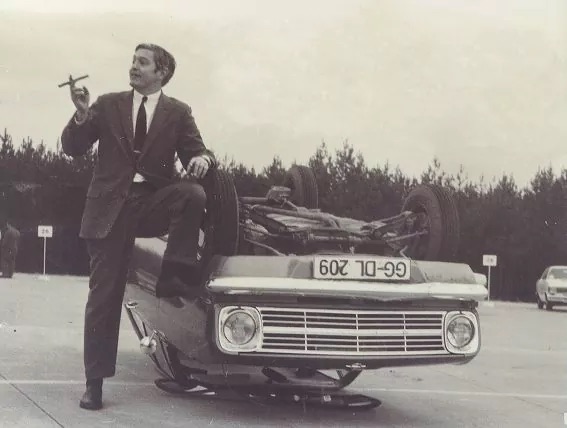
You see, on one hand, Lutz championed many iconic sporting machines over the years, from the Opel GT to the Merkur XR4Ti to the Saturn Sky and Cadillac V-series; all awesome products that almost certainly wouldn’t have existed without his support. On the other hand, the vast majority of these cars failed in the marketplace at anything other than “image building.” They were poor-selling niche products, inadvertently proving to the large automaker’s bean counters that sinking money into seriously enthusiast-oriented cars was a colossal waste of time.
The most egregious example of this might be Pontiac in the 2000s. Bob brought the fierce Australian Holden Monaro over to the US as a revived Pontiac GTO; with a 400-horsepower Corvette motor and a stick, this was the exceptional latter-day muscle machine that some believed “car people” had been waiting for.

Welp, it barely sold over 11,000 units in each of the two years it was available. Did Bob give up? No! Lutz’s seemingly unimaginable answer to save the profit-challenged Pontiac division was to double down and import the V8-powered, rear-drive Holden Commodore sedan to replace all of the division’s mid- and full-sized front-drive sedans. Called the G8, it could rightfully be called the best Pontiac-branded product in the history of the nameplate from an enthusiast’s standpoint – take a look at The Pontiac G8 Was Genuinely Too Good For Us for more.
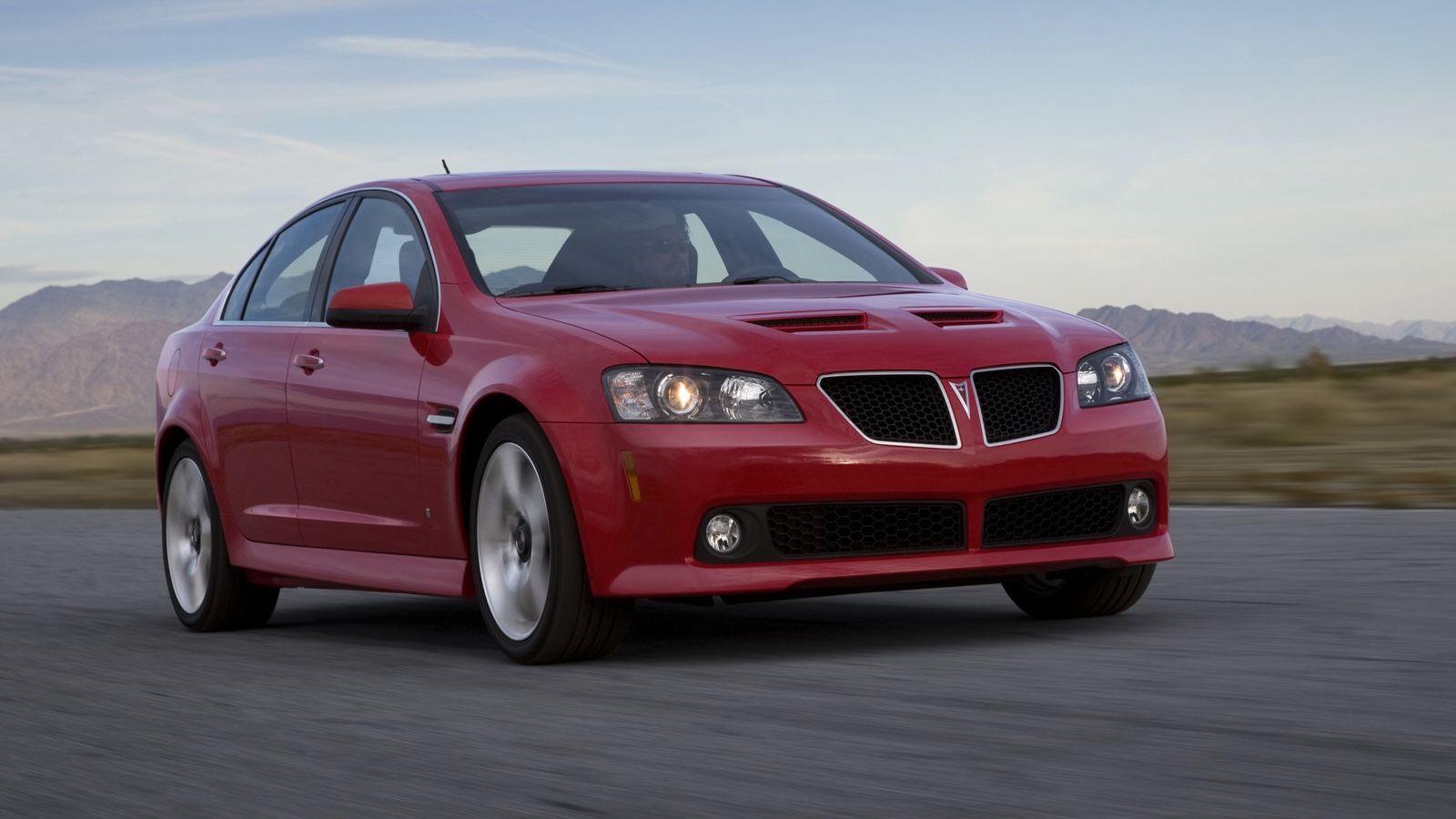
If that Holden-based GTO coupe failed to find buyers, would you think that a slightly bigger VE Holden Commodore four-door version of the same formula could work as a mainstream Pontiac product? Of course you wouldn’t, and it didn’t.
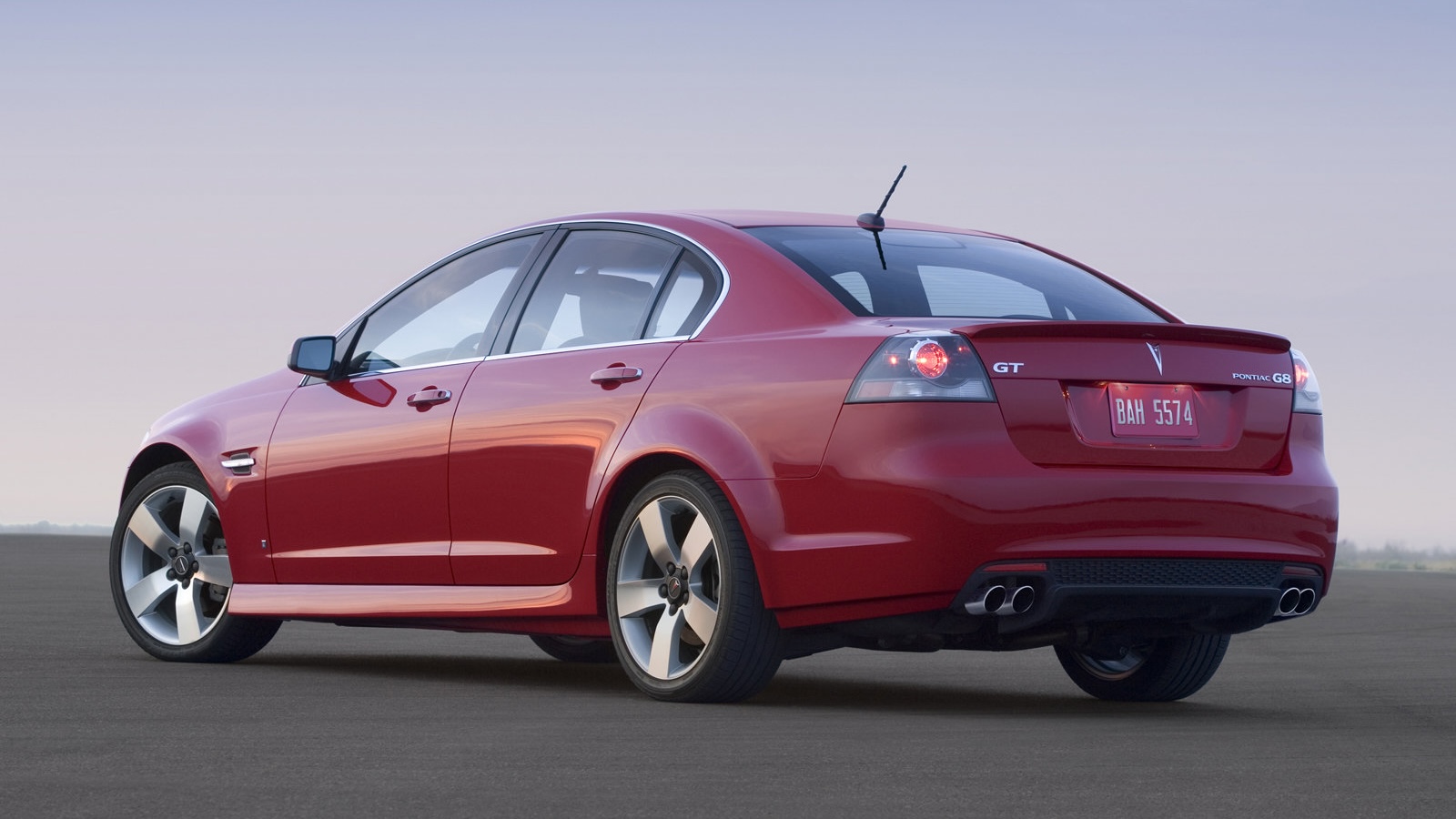
It pains me to say it, but the G8 also failed miserably, selling a mere 23,000 units in its best (and last) year; in the process, it took away any chance of Pontiac surviving when the financiapocolypse hit. Instead, The General saved a brand of redundant trucks (GMC) and one that my 86-year-old mom thinks is for “old people” (Buick), reportedly because they made money. Lutz’s plan for an all-rear-wheel-drive lineup of American BMWs was one of those car guy wet dreams that anyone could tell you wasn’t going to work. Again, you might be like me and love the products that Lutz gave us and despise much of the fodder which Lee Iacocca foisted on the American public, but I can tell you the ones that sold and which executive I’d trust my budget with. Bob once was quoted as saying, “… the G8 was a great car. I should have bought one when I had the chance.” Geez, Bob, you didn’t even buy one either!
Ironically, while this miscalculation was happening, Holden had a product in the lineup that was on the cutting edge of what American buyers were starting to gravitate towards, and it was also unquestionably an enthusiast’s vehicle. The trouble was, nobody seemed to be able to see the potential until it was too late.
Soobie Do Right
Here at the Autopian, we might have missed the thirtieth birthday of what might be considered one of the industry’s most influential vehicles. I’m not sure why we’ve ignored it, but maybe because it’s a car that a lot of enthusiasts act as if they’re too cool to like.


Many of us back in 1995 thought the idea of taking a Subaru Legacy wagon, raising the ride height, and putting a bunch of body cladding on it was a sort of silly way to make a mock “tough” soft-roader. Others thought it was just a rehash of the AMC Eagle idea a decade and a half later and resented the fact that Soobie’s granola reboot was getting the recognition that the Kenosha Kadillac deserved.

Regardless of our opinions, I bet even Subaru had no idea that the 1995 Outback was going to launch a booming “crossover” sector. By the early 2000s, it was clear that the trend was unstoppable, and while Ford and GM reaped the benefits with their truck-based sport utilities during this time, the more car-like options took longer to gel. Even worse, the brands that historically never really had an off-roader presence seemed doomed. Mercury and Oldsmobile had rebadged Ford or Chevy SUVs in their lineups, while Saturn eventually showed up with the Vue, but it wasn’t enough; they ran out of runway to evolve and adapt. Unfortunately, Pontiac was in the same situation.

GM’s first attempts at making crossovers included the all-wheel drive Montana van with an extended snout and, most infamously, the distorted-looking Aztek.
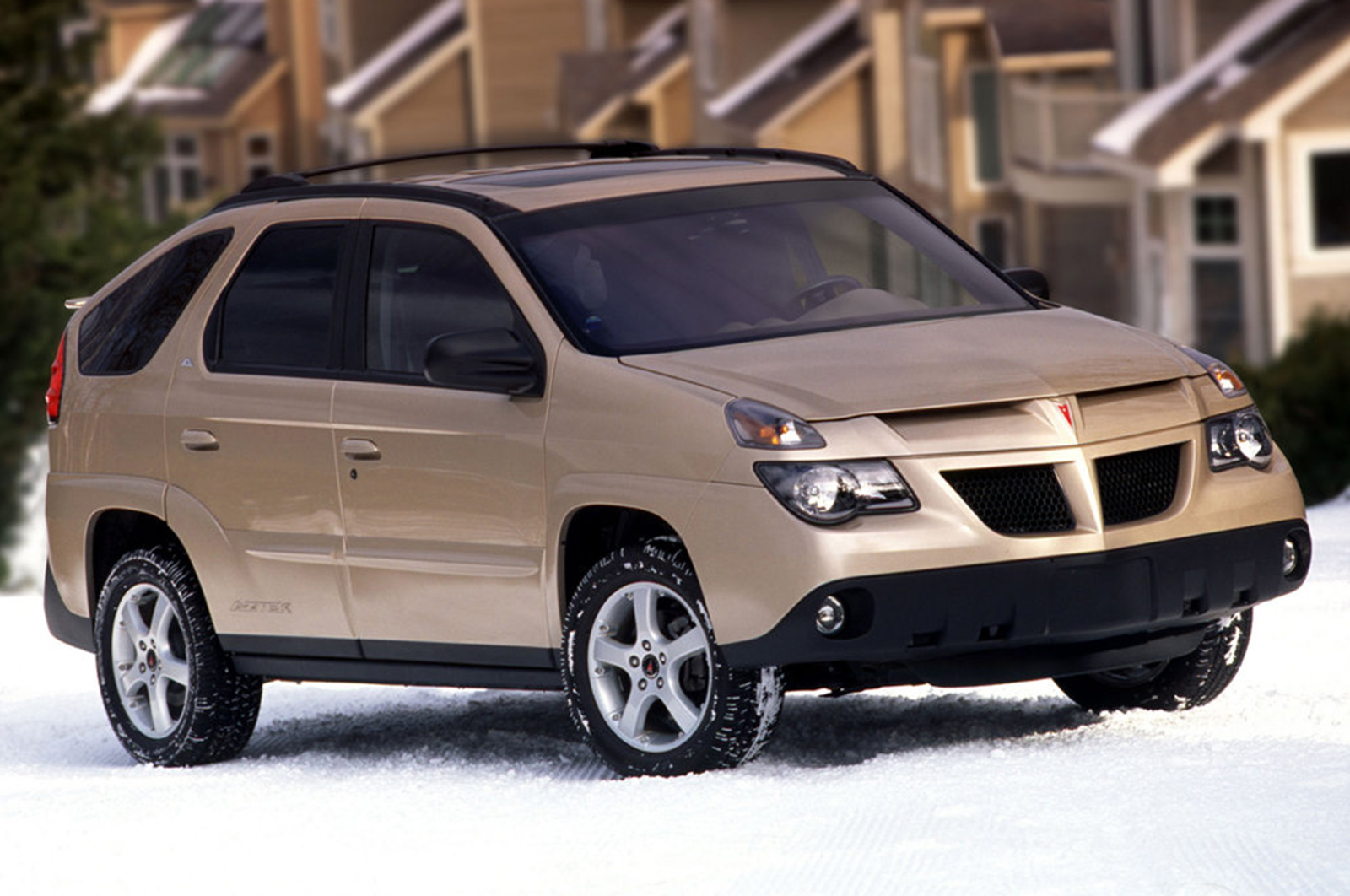
The Chevy Equinox with a Pontiac grille that replaced these was way too little too late – do you even remember the Pontiac Torrent? This was that aforementioned era when Lutz was decorating Pontiac showrooms with legendary Holden sedans which, in retrospect, the buying public didn’t want. Meanwhile, the Europeans were grabbing onto the Outback trend and introducing solid (and expensive) performance crossovers like the Audi Allroad, Volvo XC70, and Porsche Cayenne.

Could General Motors possibly have offered this kind of fast, low-profile, but still capable off-road machine through the “excitement” division when even other members of the Big Three and the Japanese still had few crossovers at all? Actually, thousands of miles away and literally on the other side of the globe, the General already had it.
Don’t Put So Much Vegamite On That Toast, Mate
Not all General Motors cars are created equal. We know that, over the years, the Americans might have gotten GM’s small-block-equipped muscle machines while the Europeans got the better-looking and handling products. What if you wanted all of those qualities in your GM car? Well, you’d have to head to the land of shrimp on the barbie and Tame Impala, where the Holden brand received the best of both worlds.
Most GM divisions were, at least on the surface, content with taking whatever platform Detroit gave them and working with it. Cadillac took the 1997 Opel Omega B and rebranded it as the doomed Cadillac Catera, a failure resulting from trying to sell German austerity to a pool of consumers that wanted a bit of glitz and performance.

Way Down Under, the Holden division refused to meekly accept the take-it-or-leave-it policy. For the new Commodore model that would debut in 1997, Holden began with the same rear-drive Omega B platform. The scrappy brand felt their cars needed to be attuned to “Australian driving conditions.” As an American, I would assume that meant guys with mohawk haircuts dressed in leather jumping onto your bonnet from rusty tanker trucks, but I’m told that’s just in movies. Regardless, Melbourne and Munich are about as different as can be, so I can’t blame them for wanting to make alterations. In addition to this beefing up of the suspension and the addition of more powerful motors, Holden also widened the body slightly to create what was called the “VT” Commodore, as Aussies tend to refer to variations of their home-grown cars in series of letters.
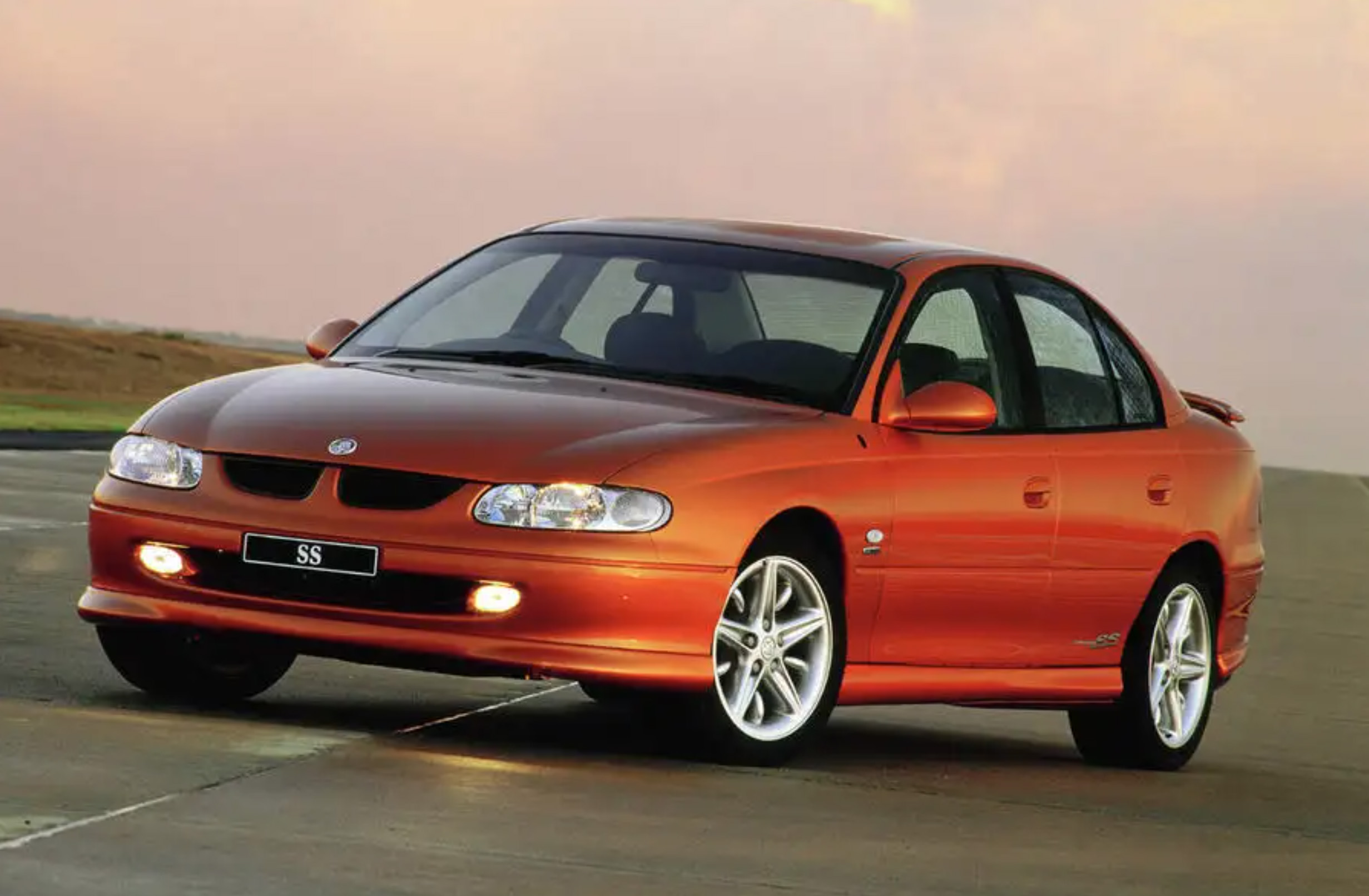

This generation of the Commodore line continued for the updated 2000 “VX” model and subsequent 2002 “VY” edition. It looks a lot like the related Omega/Catera, but the detailing is a bit nicer and more aggressive to match the stonking performance. A longer wheelbase station wagon was available as well.

About this same time, Subaru was introducing its Outback model Legacy. Could Aussies really let a Japanese company name a car for their home turf and not do their own?
You Call That An Outback? This Is An Outback
The Outback adjacent offering they came up with was the new-for-2003 Adventra, one of the more phonetically fabricated names you can imagine. Holden’s first all-wheel-drive car took a Commodore wagon and added a center differential to split 38 percent of the power to front drive axles and 62 to the rear; a rear drive bias that enthusiasts would embrace. On the outside, Holden did the same tricks that the Japanese company employed on their Legacy soft-roader by raising the ride height and installing more aggressive-looking bumpers and rocker trim (but not going all-in on the full grey lower body trim route).
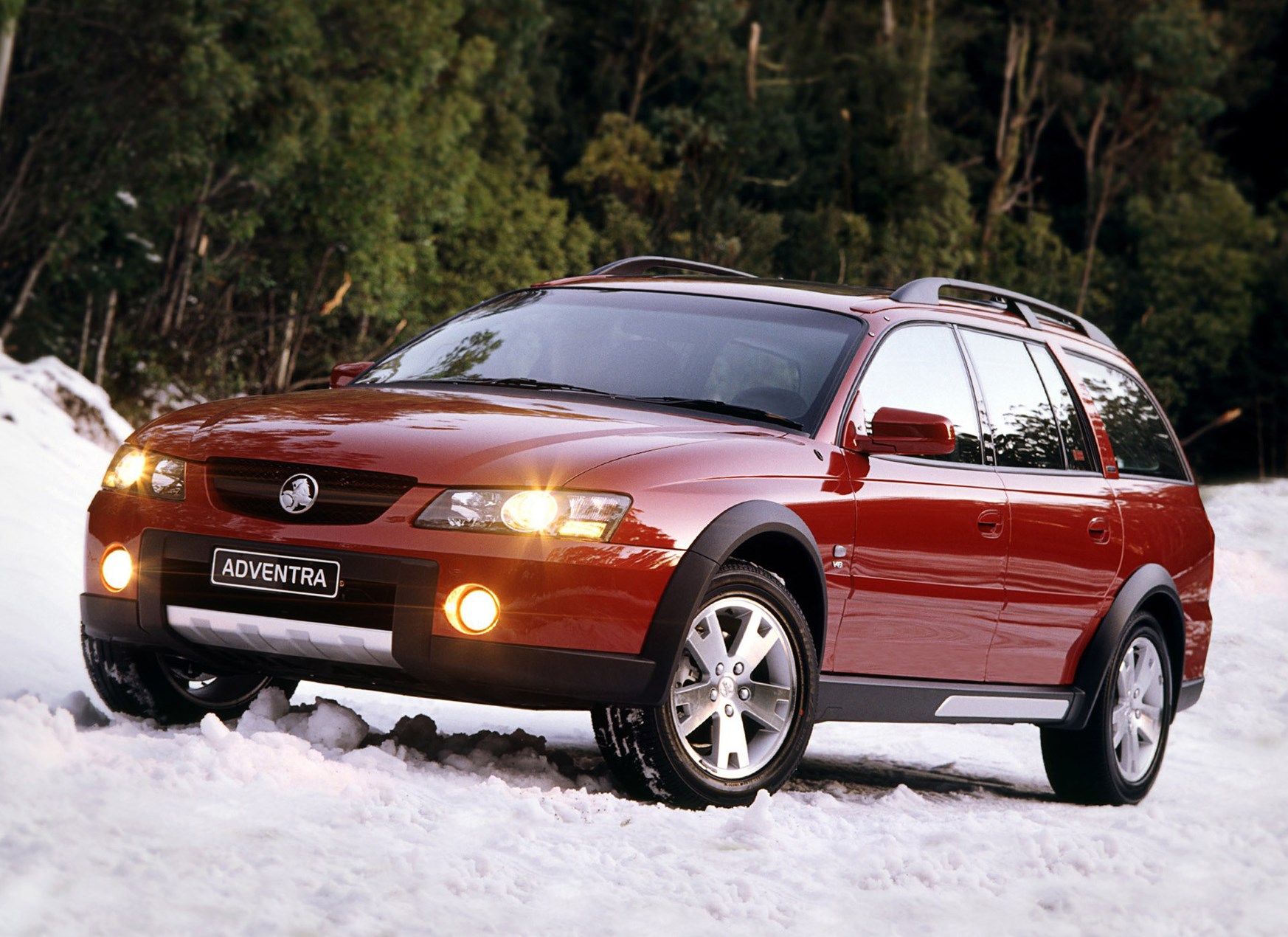
Listed as a “full sized” car, the Adventra was still not massive. It was about 14 inches longer than the 1995 Subaru Outback, though the current 2025 Outback model is now only a mere five to six inches shorter than that Holden. Note the trailer hitch, since I bet this would tow far more than that Outback:

Under the hood, the Adventra was about as un-Subaru as could be with an American-made Generation III 5.7-liter eight that pumped out 315 horsepower; a four-speed automatic was the only gearbox option. Four-wheel independent suspension included a self-leveling system in back. All of us Autopians dream of a V8-powered AMC Eagle restomod, but the transfer case and exhaust setup make that impossible (plus, you’d still have a live axle on cart springs in back). This Adventra was like that dream come true.
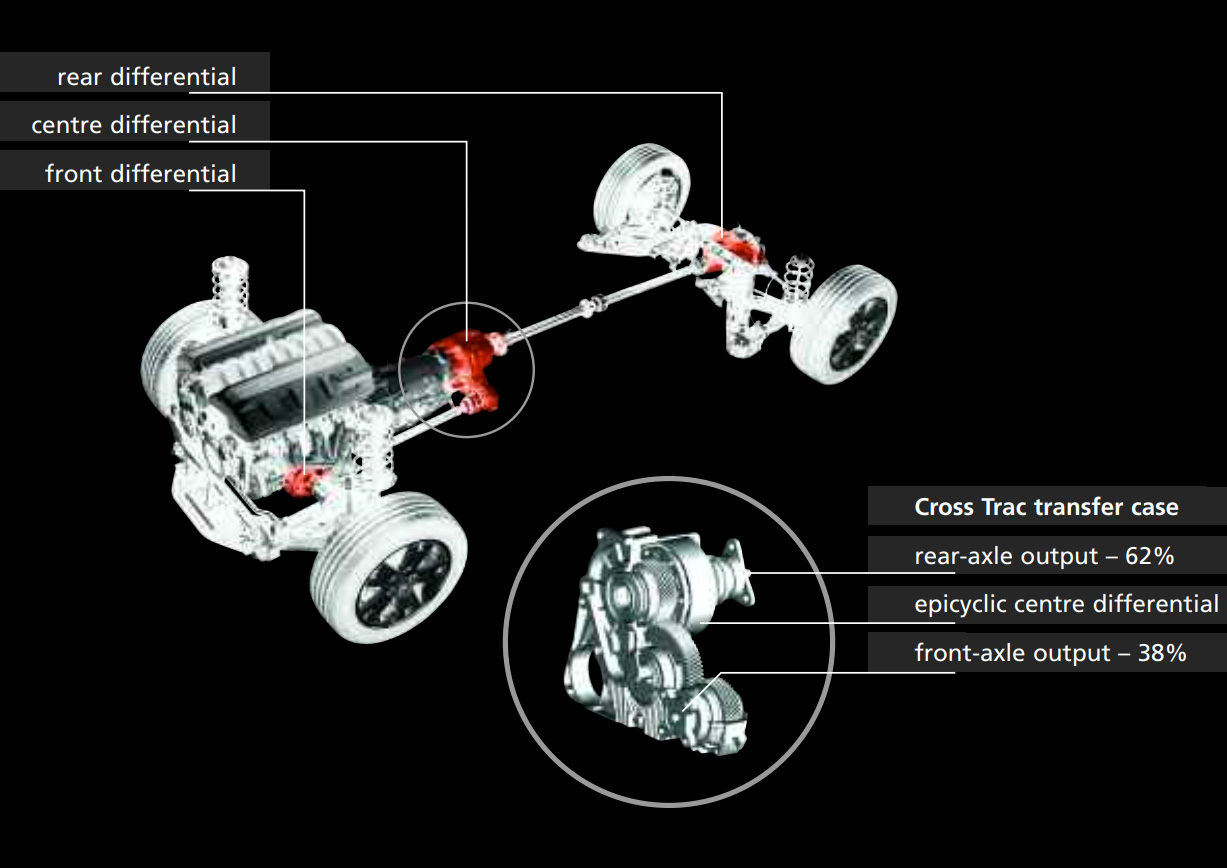
Naturally, the extra weight and higher center of gravity did the handling no favors, but reviewers were pleased with the road manners. Performance was not as neck-snapping as you’d hope, but it wasn’t a slouch either. Contemporary tests showed zero to sixty times of around 7.8 seconds; you’d be able to challenge at least several lower levels of Porsche Cayenne with those figures. Sadly, the Adventra liked to “hit the terps” as they might say down there with a sub-15 mpg thirst.
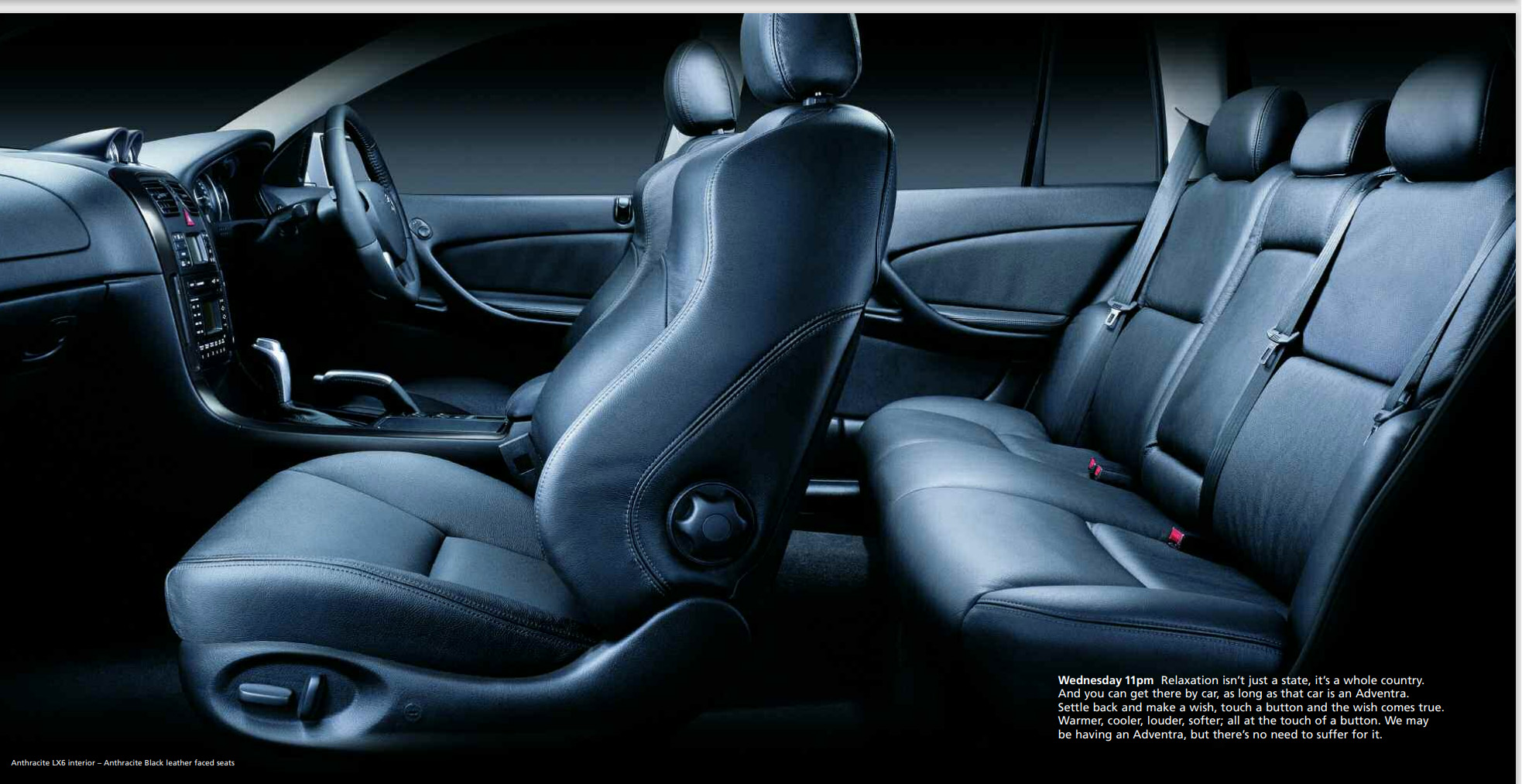
Inside, you found a rather spacious interior appointed with decent quality materials, and the Adventra had an added trick: a front-facing small third row. At the time, the Volvo XC70 was the only other crossover wagon with an available (pretty crappy) seat in the cargo area, and it faced rearward (the Mercedes E-Class 4MATIC also had rear-facing folding third row, but that wasn’t really a crossover and was far more expensive). Apologies, this was the highest-res image I could get:
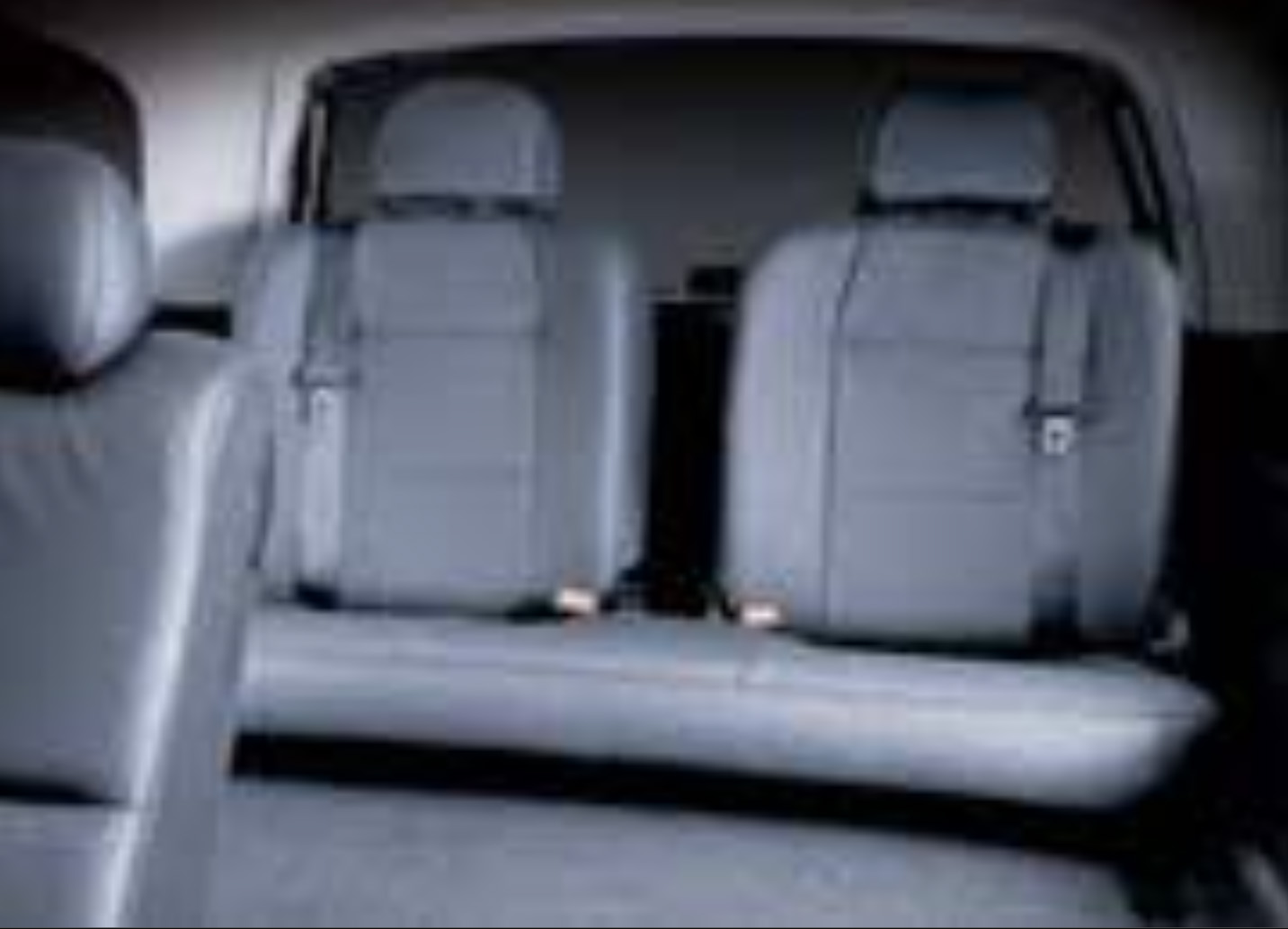
When the barely facelifted “VZ” version of the Commodore and Adventra debuted for the 2005 model year, Holden made a welcome change for many potential buyers: a more efficient twin-cam 3.6-liter V6 became standard. Packing 222 horsepower, it still offered decent motivation without as much of the pain at the pump you’d get with the still-available V8.
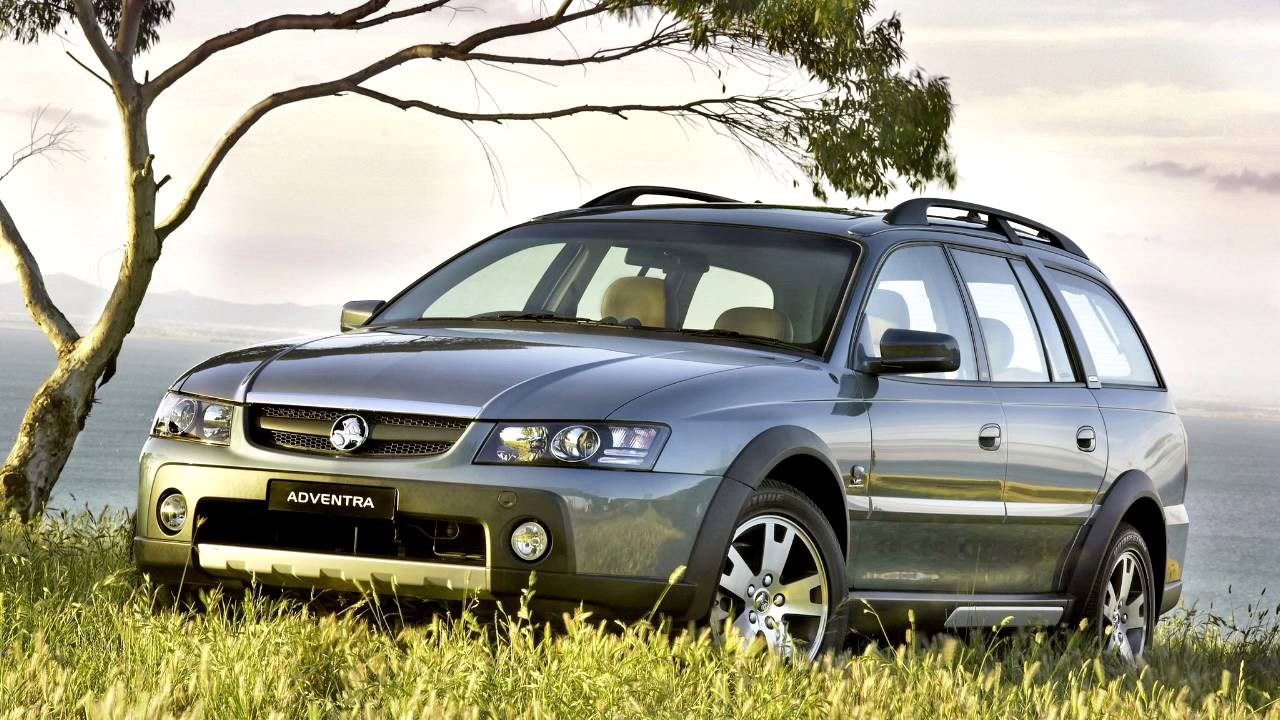
Ah, but that’s not all. You might be aware that Holden had a performance division called HSV. If so, you’re probably wondering if these people got their hands on an Adventra. Wonder no more.
Here’s The GM Avalanche You Really Want
Holden Special Vehicles started in 1987 and effectively replaced the Holden Dealer Team range after controversies and strained relations with HDT manager and racing legend Peter Brock started to endorse the bizarre “energy polarizer” in his cars and adding things like an independent rear suspension without GM’s consent. With this crossover Adventra, HSV developed a more powerful model called the Avalanche with an uprated 360 horsepower 5.7-liter V8, different wheels, and reshaped front and rear fascias.
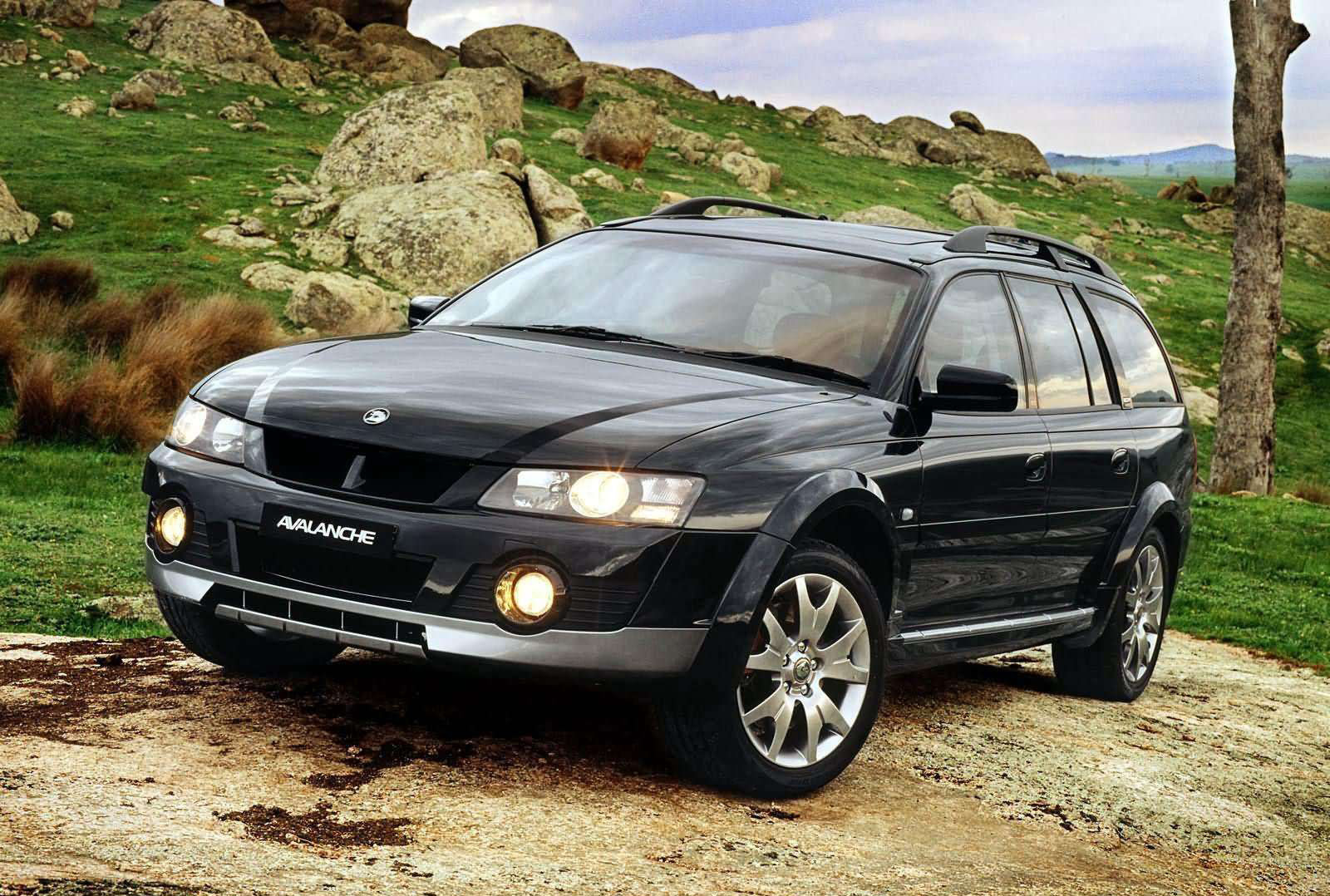
To be honest, the Avalanche was a bit of a paper tiger, offering only 26 horsepower more than the standard Adventra at a price that was around $8,000 to $12,000 more (in 2004 U.S. dollars). Zero to sixty time dropped to around seven seconds, so it wasn’t really that much faster.
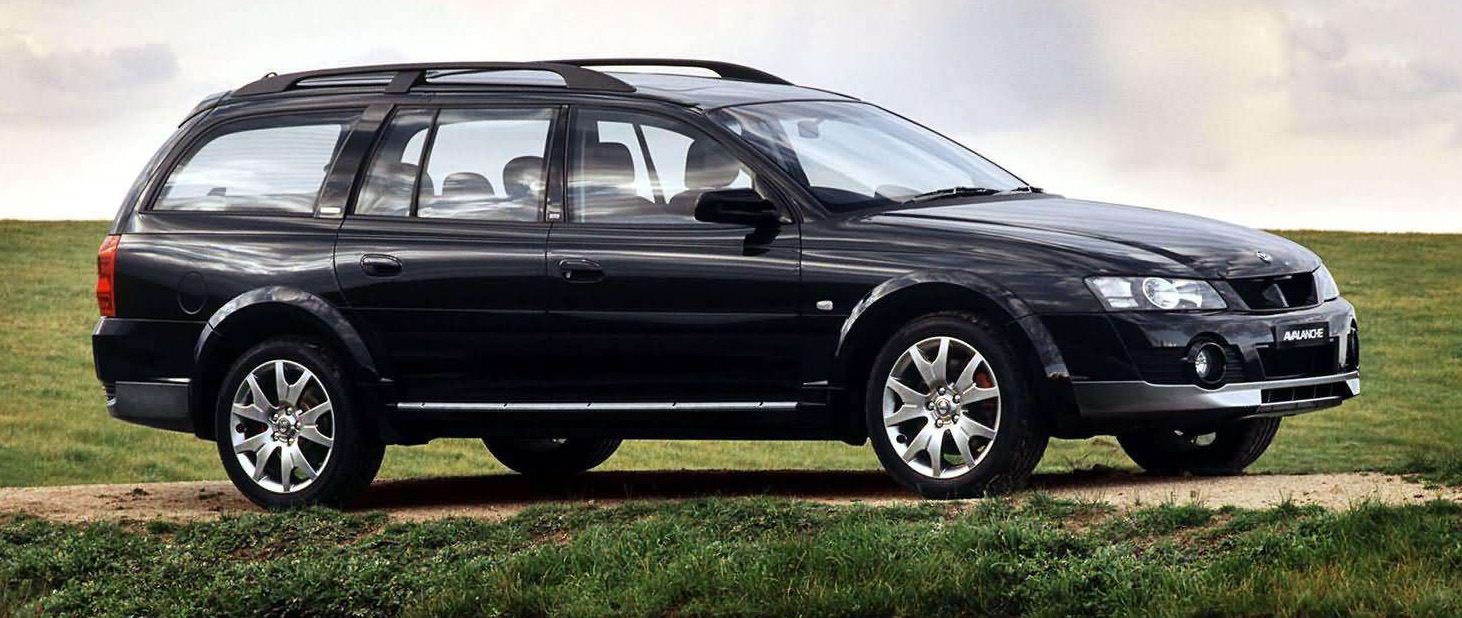
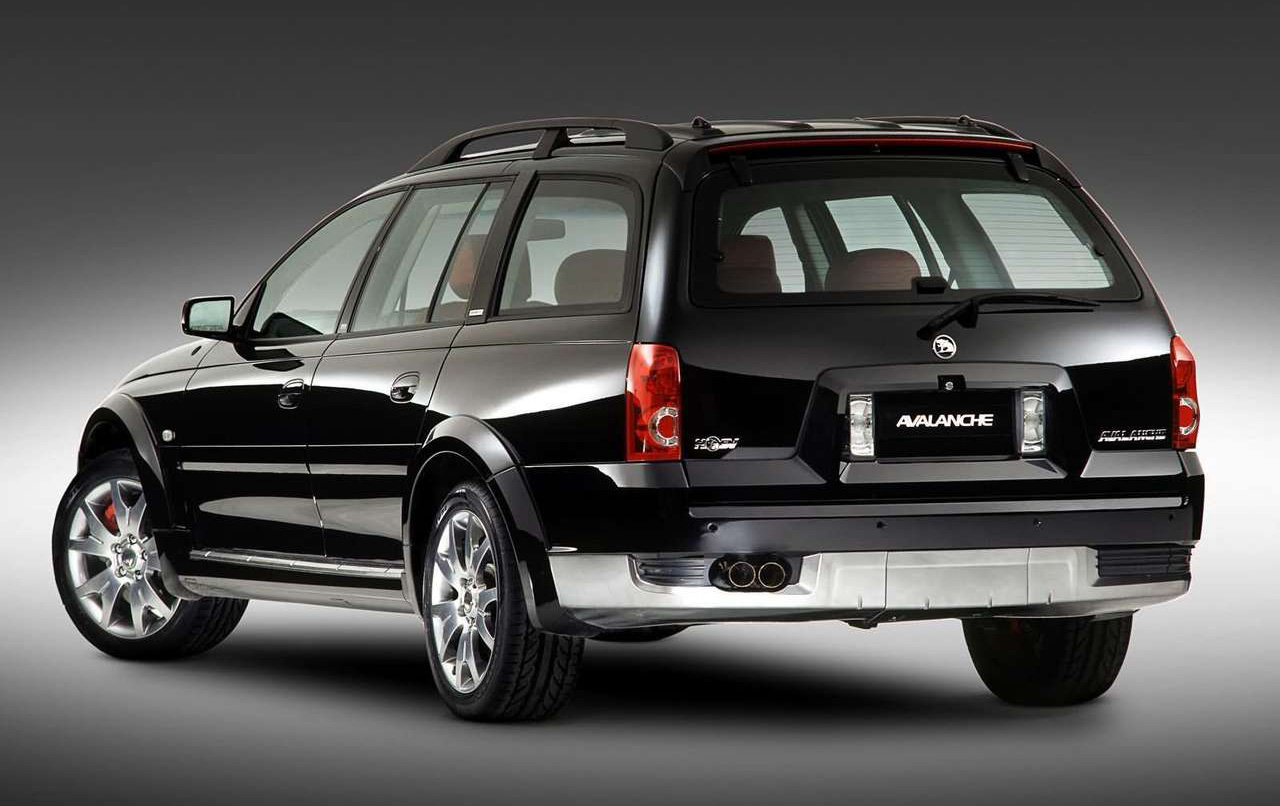
Sadly, the Adventra was never a strong seller in Australia. I’m honestly not too surprised by that. People down under seem to have very good taste and common sense when it comes to cars, and unlike Americans, they likely saw no need for a jacked-up station wagon to combat snow and ice that never existed, or sit higher to go head-to-head with giant SUVs that didn’t clog their urban roads at the time. You wanna go off-roading? Australia is the real Outback: better get a (Toyota Land) Croowsah, mate! Holden saw no need to upgrade the V8 to the next generation 6.0 liter, and the crossover wagon format wasn’t offered in the next generation new-for-2008 “VE” series of Commodore that, ironically, came to the United States as that doomed-to-failure Pontiac G8.
Ah, but just because Australians didn’t go nuts for crossovers didn’t mean that Americans, even in the sunbel,t weren’t eating them up. Let’s imagine bringing the Adventra over to the US instead and see if it could have helped give Pontiac a new lease on life.
You Need To Have “Fire” Or “Bird” In The Name
The conversion from a Holden Adventra to what I’d call the Pontiac Firetrail would be painfully easy in terms of appearance. All I had to do was flip the image of the right-hand drive car, add side marker lights, and a signature twin-nostril grille. It looks great and makes me miss my dear departed BMW E61 station wagon even more.
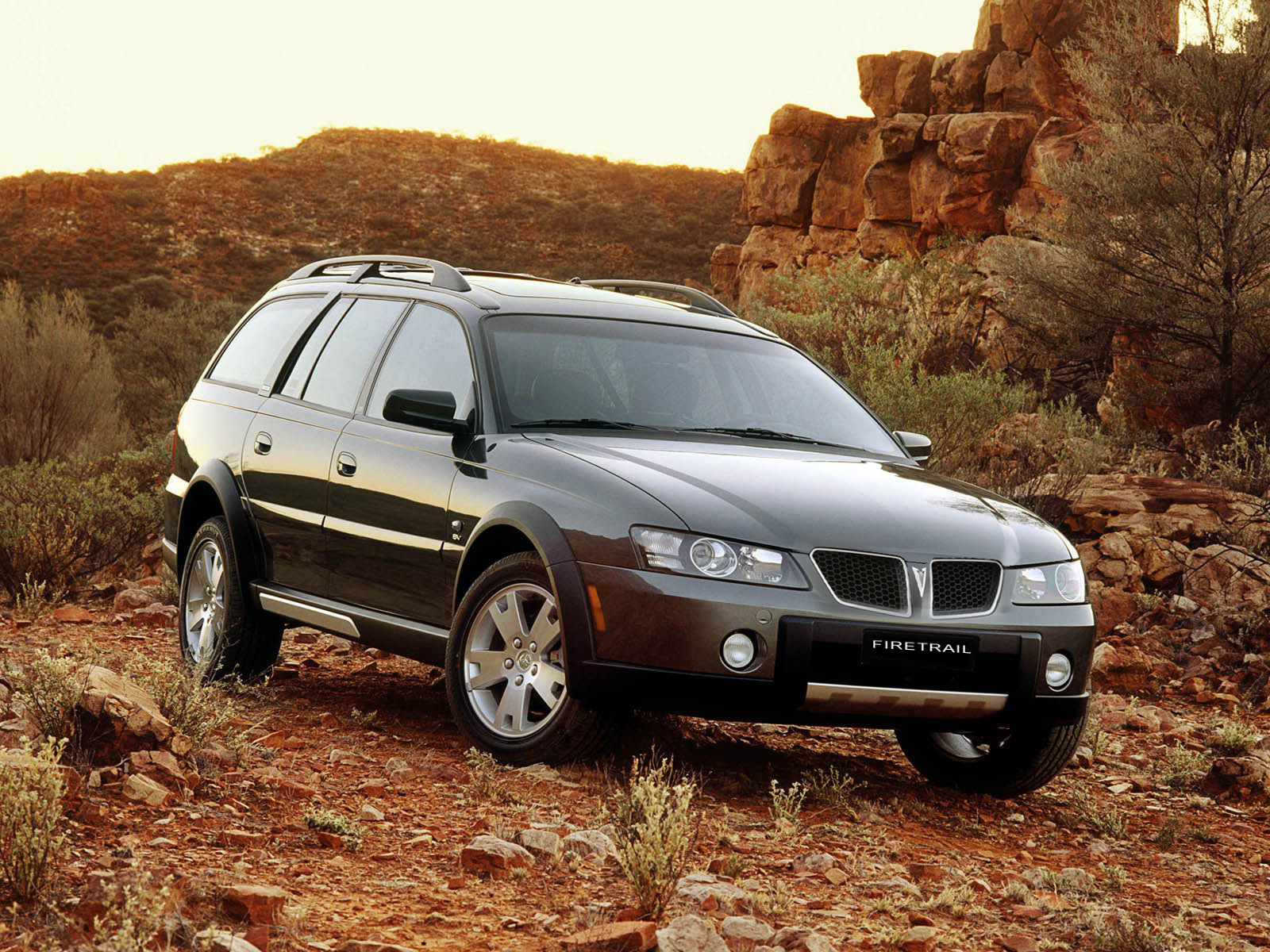
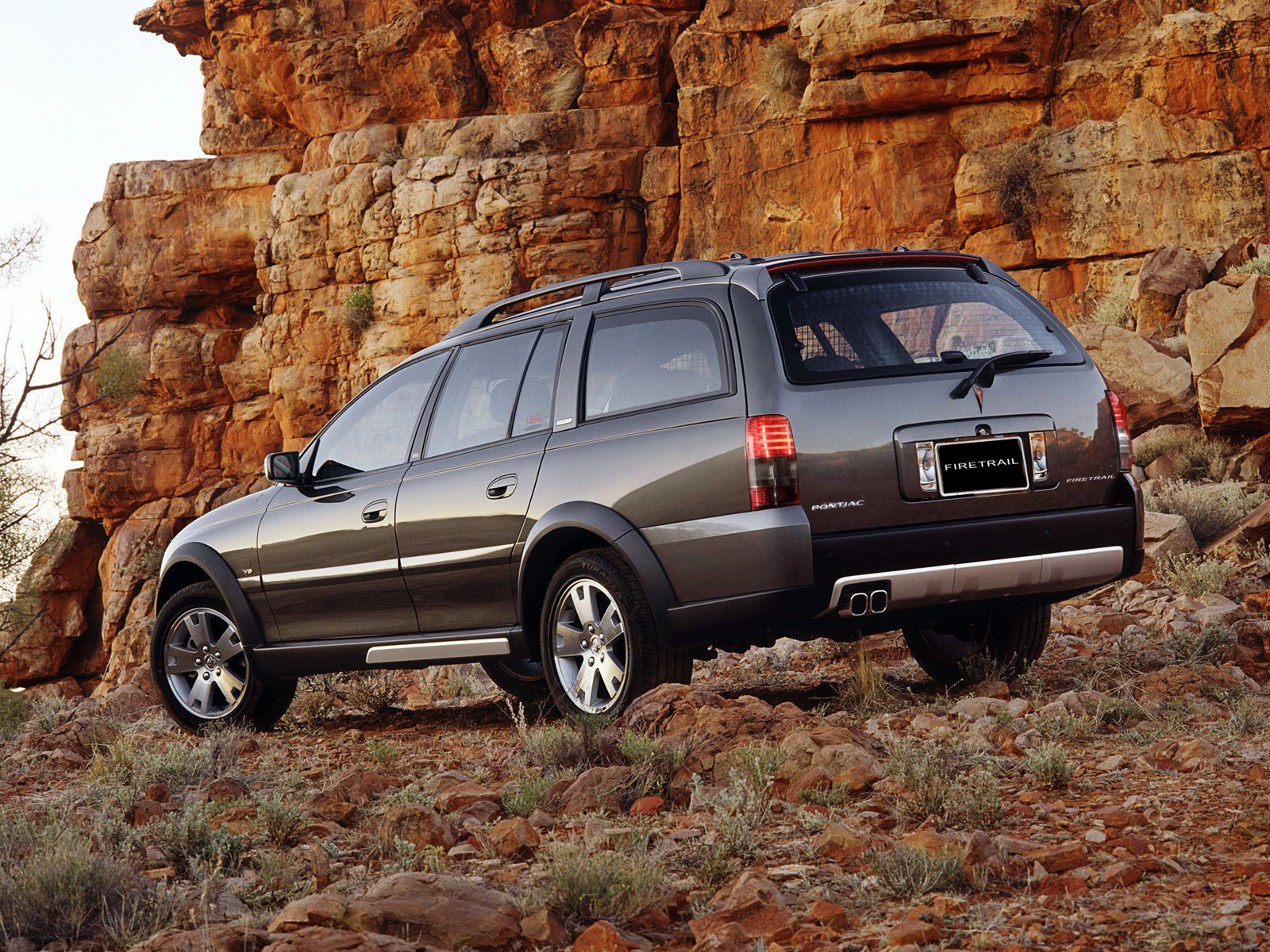
The back I’d keep essentially the same, save for badging and taillamps. Inside, one of the bigger issues with the GTO and the G8 was the relative lack of available equipment compared to what might be considered competitors in the US. The GTO didn’t even offer a sunroof option, and neither of these Holden transplants had any kind of screen for an optional navigation system; rather unheard of at the price (OnStar “turn by turn” audible navigation was available, but that isn’t close to the same thing).

For the Pontiac version of the Adventra, you can see that I’ve replaced the center stack with a more upscale-looking design, complete with a large screen to solve that issue and make the Australian car more competitive. The vents are relocated to the metal finished sides, and red Pontiac illumination is used in place of the odd Holden orange lighting.
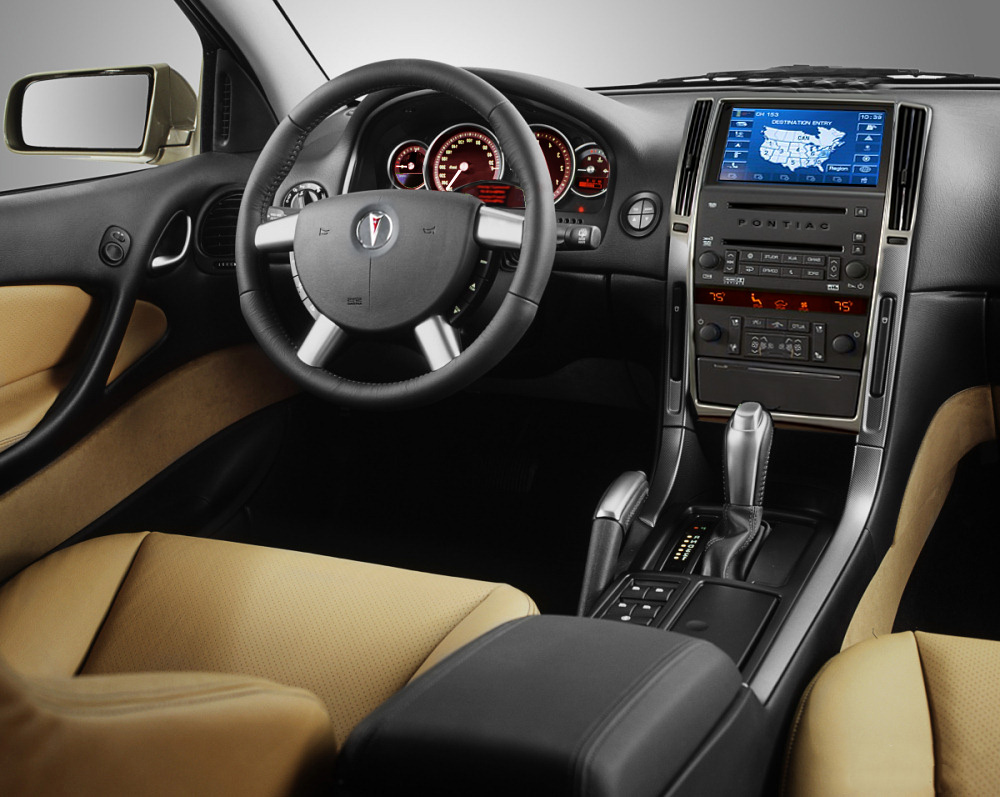
GM could have possibly offered a GXP version equivalent to the Avalanche model. I’d love to find a way to get that Generation IV 6.0-liter V8 into the thing, or maybe just a supercharger onto the existing Gen III motor.
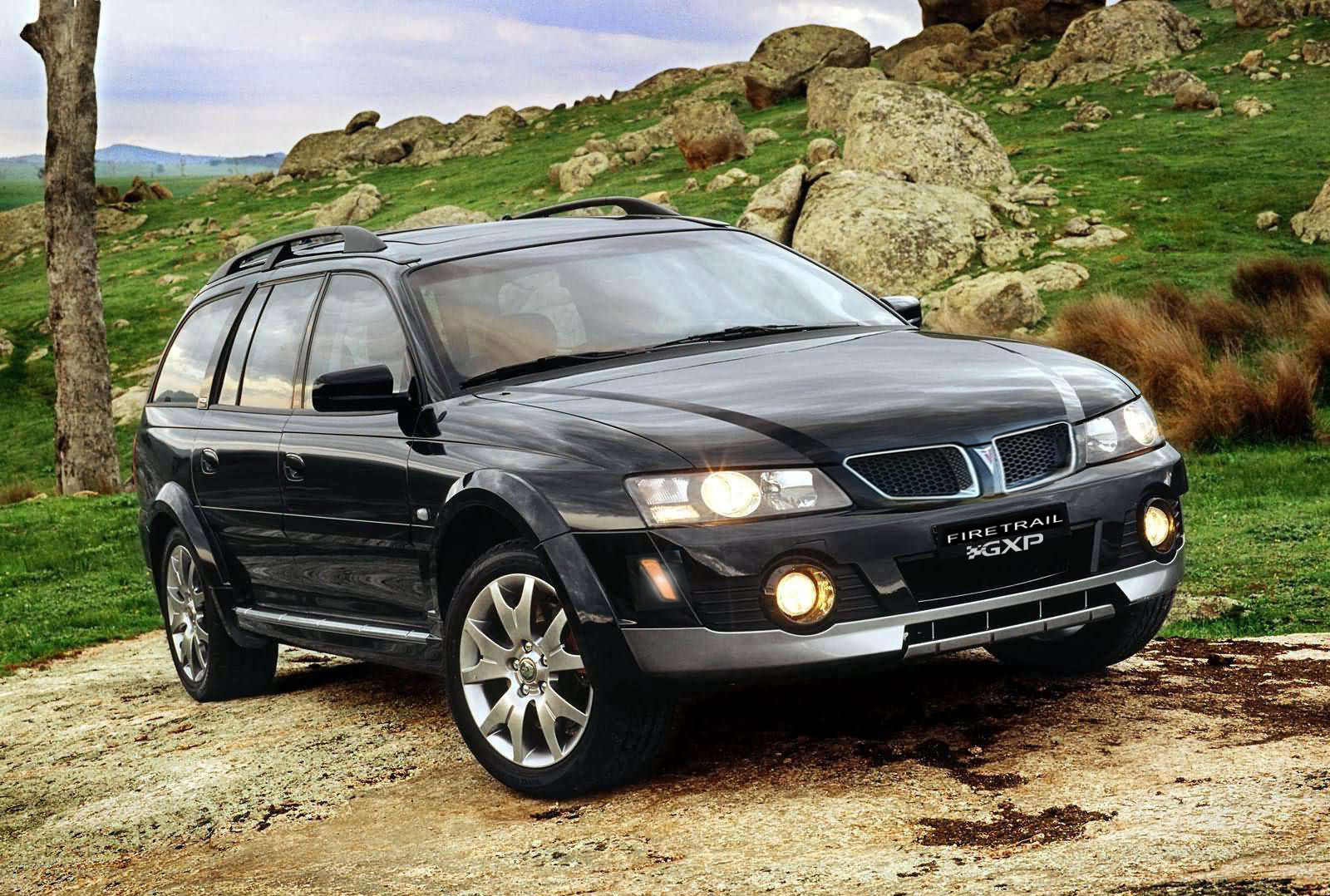
Regardless, we’re talking about an Outback with the cool factor turned way up, but even more practicality. If Subaru’s “LOVE” campaign and eco-loving-safe-car image turned your stomach, this would have been the crossover for you. Or me.
El Camino Los Baja
Ah, but there’s another twist to the story. You might remember that Mr. Lutz came this close to bringing the Commodore VE pickup truck to America, essentially giving us the first coupe-ute since the El Camino passed away in 1987. Performance would have been blistering in the horsepower GXE version that we were teased with.
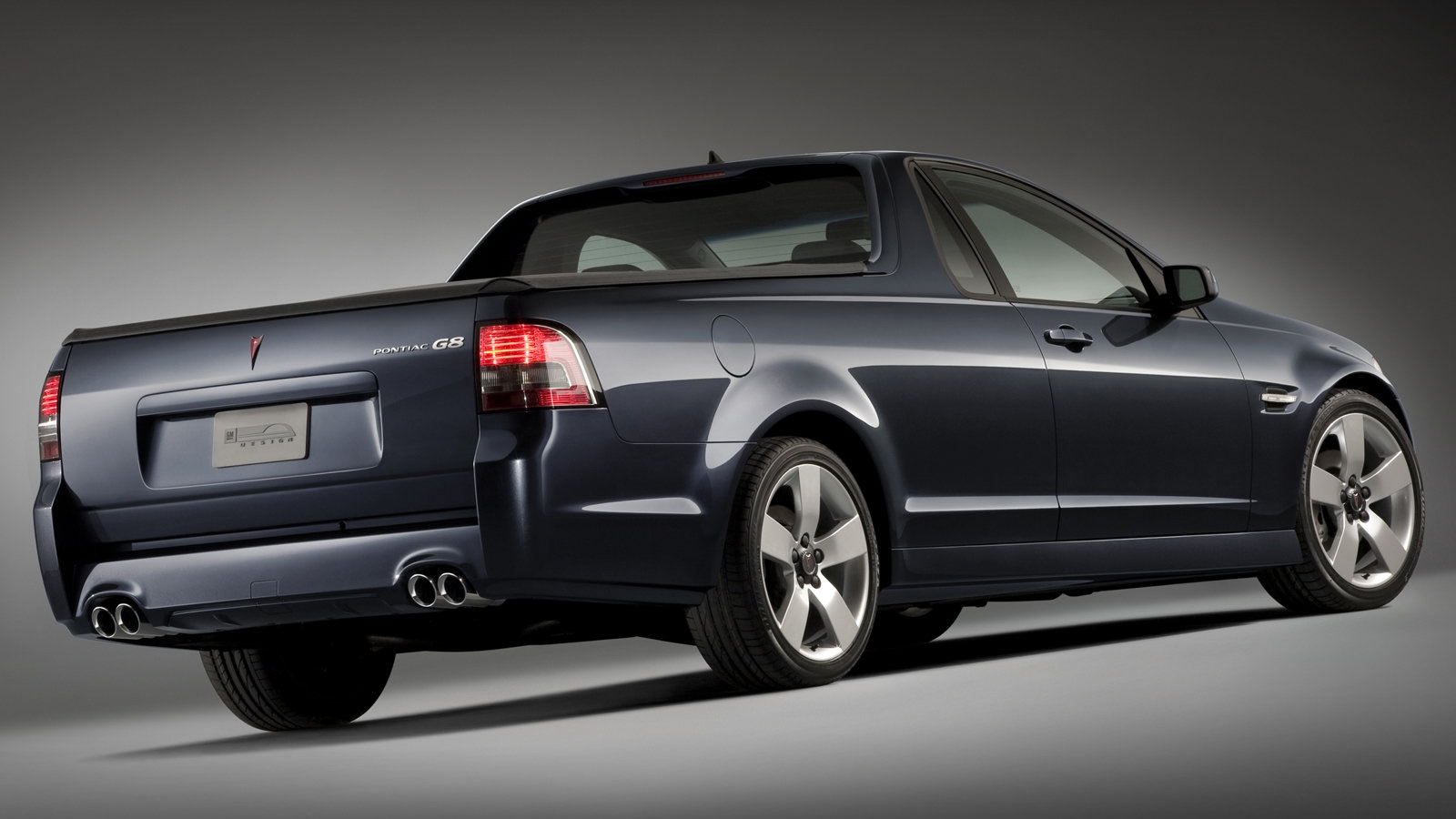
As poorly as the Pontiac G8 GXP sedan sold (only 1,600 over two years) and the limited appeal of the El Camino two decades before, I would imagine the sum total of pickup versions that found buyers here would have been in the dozens. As always, I’d never deny the cool factor of a Lutz product, but it’s easy to see where he failed.

However, just as Holden had a great alternative to the Outback with this Adventra, they also had a far cooler and more practical alternative to Subaru’s strange neo-BRAT, the Baja. Holden’s was called the Crewman. It’s got the same decent-sized cabin as the Adventra and a far more usable bed than the Baja’s pointlessly short cargo area. Dare I say it looked cooler than that funky Baja, too?

You think they made an HSV version of this odd sedan-pickup? You bet they did! Called the HSV Avalanche XUV, I can see it being a Subaru Baja with some serious beans.
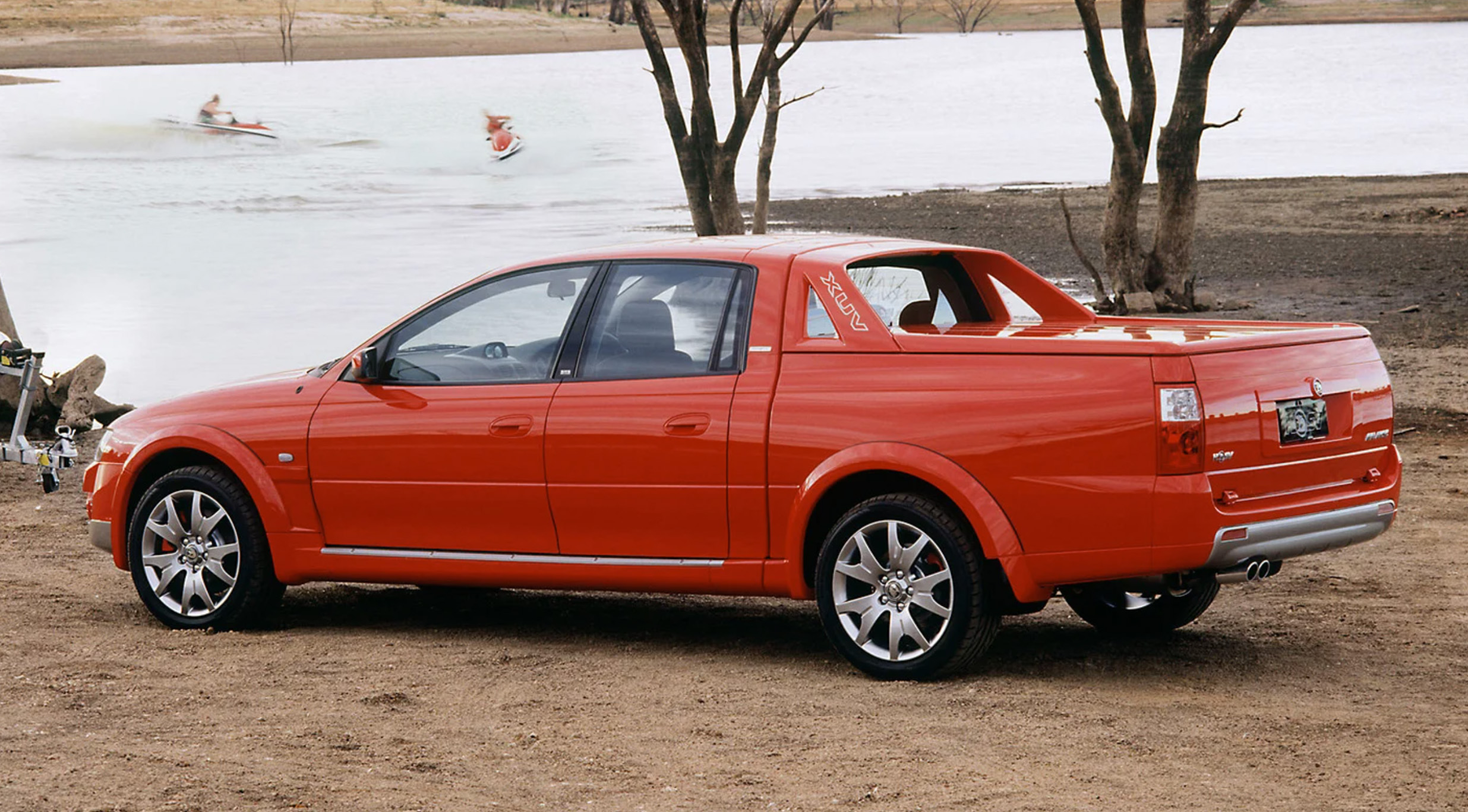
No, our Pontiac “El Catalina” would not have been a monster seller, but I can virtually guarantee it would have attracted more buyers than a two-seater G8 ute or that bizarre Baja. Again, four-door trucks were just coming into their own then, so why not a more car-like one? Sadly, we’ll never know.
Holden On To Pontiac?
Reportedly, the Adventra wasn’t perfect. Besides the fuel economy of the V8 dipping into the low teens, quality control issues were frequent, and the purchase price was rather steep at the equivalent of around $32,000 to $40,000 US dollars in the mid-2000s. Still, you would think that some, if not all of these problems could have been rectified; the important question is if a Pontiac Firetrail might have found an audience that the Bob Lutz-backed GTO and G8 didn’t.
To me, the answer would have been a resounding “yes.” Essentially what you’d have is a slightly larger Subaru Outback wagon with a V6 engine standard or optional bruising V8 power. You’d have performance to match far more expensive machines from the Black Forest or Gothenburg; I’d take one over an Audi Allroad or Volvo XC. For a large segment of the population before the financial crisis of the late 2000s, that was exactly what they were looking for, but obviously couldn’t find at the time. I’m not an automotive product planner from the early aughts, but doesn’t that sound like printing money?
At the very least, it might have allowed our man Bob Lutz to make a case for keeping The Excitement Brand alive for another day.
Top graphic image: GM/The Bishop

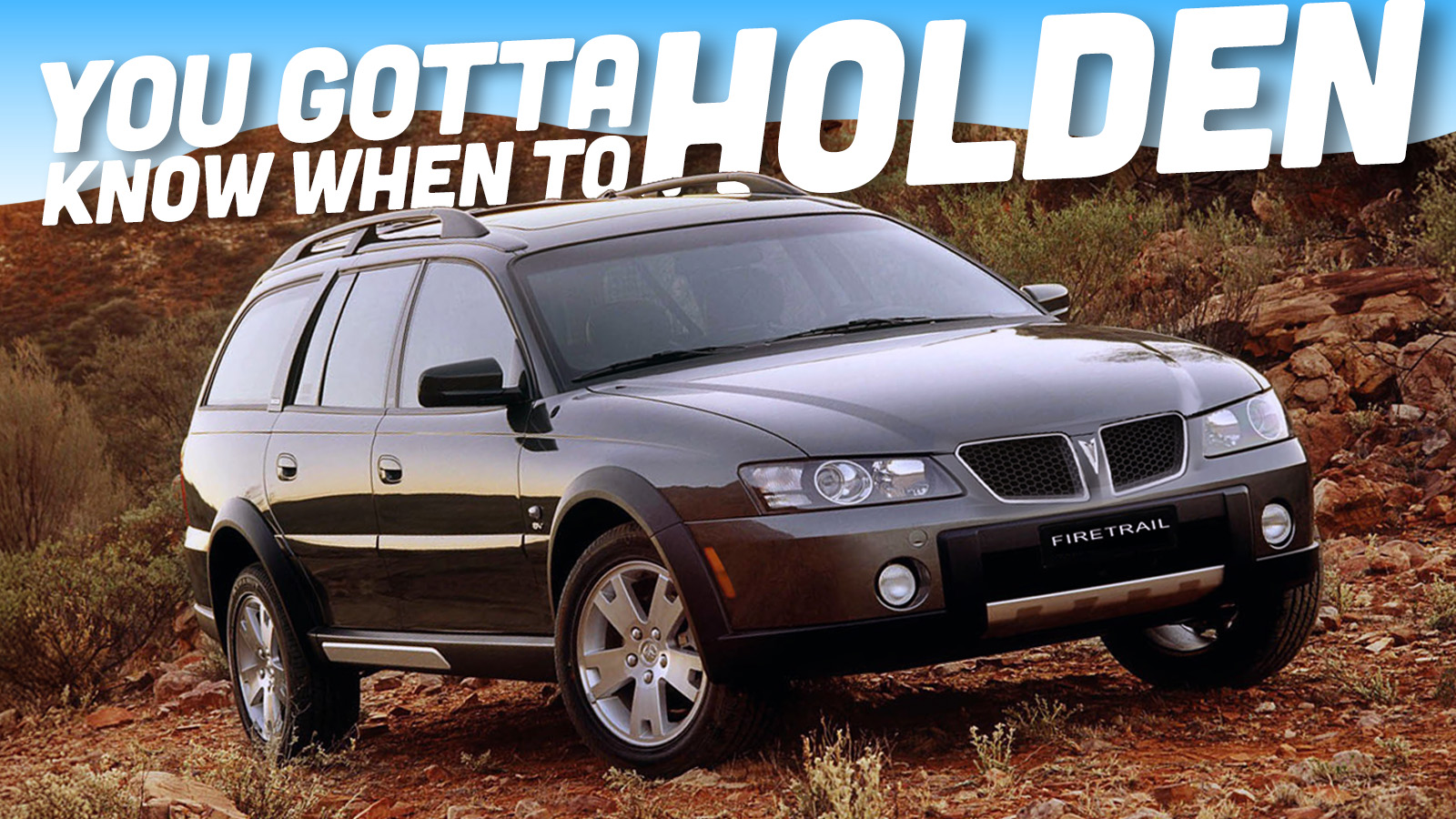







Gotta love Maximum Bob, such a fascinating guy and he helped bring so many wild cars into the world, even if nobody bought them LMAO. Idk if it’d be possible for The Autopian to interview him, but that’d really be something! I’ll never get the chance, but I’d love to pick his brain about the industry; ask him what’d he’d have done differently if he had succeeded Lido at Chrysler. I’m sure it’d be interesting!
I really hate that most people aren’t car people despite that fact that we live in a car dependent society. Otherwise, the Adventura/”Firetrail” and G8 Ute would’ve been hot sellers.
It’s got rear wheel drive and a V8. It’s perfect and exactly what I want, I can’t wait to buy one used in 8 years for dirt cheap. And that’s exactly why it would have tanked anyway
Firetrail sounds to close to forest fire!
The G8 would have sold better if it had a name. It could have even been called the Pontiac Holden Commodore.
Vegemite is spelled with 3 Es, and no As.
Great article, by the way! GM has made so many missteps, and yet they persist, at least in the US.
Personally, I think what could have saved Pontiac would have been putting any effort at all into making the Monaro/GTO bear any resemblance to its forebears beyond a couple of intakes on the hood.
I know it’s easy to say now, having seen the runaway success of “retro-future” styling ever since, but even back then I remember being confused why they gave a muscle-car name to something that most closely resembled an Integra. Can you imagine if Pontiac had beaten the 60’s throwback-oriented 2005 Mustang to the punch, by having a body that looked like a modern version of a 1970’s-era GTO? I think a little nostalgia would have gone a long way.
There’s a farm near me in NJ that uses a Commodore VE for moving hay around. I assume it’s not road legal. I always nearly crash every time I pass the farm as I’m looking all over for the VE. My kids hate me.
That Holden XUV doesn’t look like it would fit in any US garage outside of Jay Leno’s. It’s miles long.
Also I always wondered if there was a Richard Hurts from Holden working at their organization.
In retrospect, it’s a bit odd Pontiac never got a GMT360 variant. Even Saab got one, and their off-roading cred begins and ends with flying sideways through a Finnish forest. Slap a twin-nostrel grille on a Trailblazer SS, call it a Safari GXP or something (plus obligatory basic versions), and while you’re not going go light enthusiast hearts on fire, it would’ve probably at least sold a bit.
Also, as a point of contention, that thumping V8 might’ve been Canadian-built (St. Catherines) for a bit of Commonweath collaboration.
Pontiac and GMC were merged by then and usually in the same showrooms, so together they were considered more of a full line like Chevy.
Buick and Olds sometimes were in the same showrooms too, but when it came to rebadged GMT360s or vans, they usually were positioned more premium, so in theory they didn’t overlap or went for a different target buyer.
Saab dealers were usually standalone so that was just a quick-fix to get an SUV in showrooms. Kind of like Saturn suddenly getting a van/3-row vehicle in the Relay.
I mean, I see that piece of the business, although it feels a bit like the Jaguar/Land Rover situation, where one brand gets starved of potential product (and commercial viability) to protect a brand sharing showroom space.
Plus, GMC never got the 6.0.
It is rather circular. Like how the Acadia was originally slated for Pontiac but went to GMC supposedly as a reward for sales performance. But even so I think it did probably do better than it would have under Pontiac.
I almost referenced FCA because that’s like the same thing again now, playing out for longer. Chrysler and Dodge are starved for product and don’t have anything viable in the highest volume segments because of Jeep, but then a Jeep version is probably always going to sell better anyway, so they’re just racing to the bottom.
only issue is the Adventra wasn’t engineered for left hand drive
GM had the LHD Opel Omega in EU and the Cadillac Catera in the US, so that should not be a big issue.
but they weren’t AWD where as the Holden was.
I had the opportunity to flog Adventras and Crewmans around Hidden Valley Raceway in Darwin, and they were a hoot to drive. Crazy getting so much power with that LS1 under the hood.
The original Outbacks sure had nice, clean, styling. So different from the newest one.
I’ve been living in Australia for 6 months and have yet to see an Adventra.
I have seen a Crewman, and not knowing that this thing existed, I thought it was a homemade chop shop abomination. The proportions are so hilarious, I couldn’t believe it was a factory effort.
Let’s be honest, the 70s required every car manufacturer to build ugly poorly performance vehicles. However after that had past Holden and other manufacturers started building real cars again and GM just continued to build the same 70s cars with weak ineffective adjusting
The Adventura was a half-baked response to Ford Australia’s very excellent Territory. Got the sales and the respect it deserved.
Certainly would have sold better than the sedans I expect. I doubt it would have been enough but it sure to imagine a world where it was enough to save Pontiac and maybe even the Australian auto industry if it was a big enough hit. Actually pretty close to being able to import these generation Holdens too…
I would have loved it, but I really couldn’t see a market for it at that price point.
Great article as always, @bishop, but please, please, please banish “welp” from your written vocabulary. It’s informal slang, according to Webster’s, and IMHO makes anyone who uses it sound uneducated, which surely you are not.
Welp that’ll do it
Welp, you’re no fun.
Thank you very much!
Two things:
-I actually never put “welp” in my posts; it must be from the person editing my articles and I refuse to call them out.
-Just because I might have a master’s degree doesn’t mean that I’m not an idiot.
This is a dumb take. He’s not writing a master’s thesis here, he’s writing a fun article for a car blog. He’s allowed to use slang.
Gotta admire ol’ “Maximum Bob” (Maximum Boberdrive?). Devoid of context, that photo of him smoking a stogie atop a wrecked Opel really signifies the impact these people had on the auto industry.
That said, I appreciate that he stuck to his guns with cool sedans. You could argue (as you did) that automakers were slow to adopt crossovers. I disagree. They forced crossovers on us.
Massive unibody SUV adoption came to be because American Automakers can’t stop exploiting the EPA loophole. So much so that every non-SUV body style (including wagons not unlike the Firetrail) had to be adapted or eliminated to take advantage. It was the marketing, not the engineering that made people buy these cars over everything else.
That’s why they saved GMC over Pontiac.
We kinda got to see how this movie would have played out in the form of the Dodge Magnum. It was a wagon. It had an available V8. It sourced its platform from the parent brand. Google tells me that the Magnum had one great year selling 52k units in 2005 then disappeared by 2008 when sales fell to 7k units.
I fear that even in the parallel universe where the “FireTrail” had come into being, Pontiac would have still succumbed to the financial crisis.
Very nice car, but GM was not in the habit of making good decisions during the Dubya years.
Or the Clinton years.
Or the H dubya years.
Or the Reagan years.
Or the Carter years. Or the Ford, uh, months. Or the second term Nixon years.
No screen, but it did have inclinometers, just like an early-80s Tercel 4×4 wagon! And I like the green back-lighting on the LCD panels. Sub-15 mpg fuel economy is pretty sad.
And the Aussies use imperial gallons (although mostly they use litres like a civilised country), so in the miles-to-US-gallon rating would have been even worse.
This was all plausible until I got to the El Catalina bit. Like, I could have seen GM taking the swing with the Adventura, but the ute? No way.
An upside down Opel? That’s a Holden. I wonder which way the vortex circles when draining the oil.